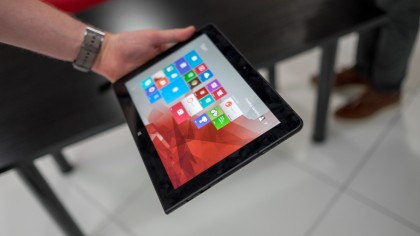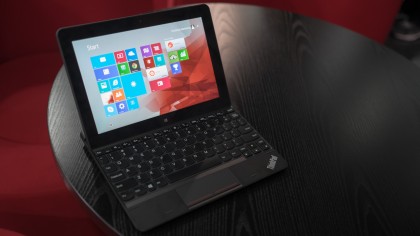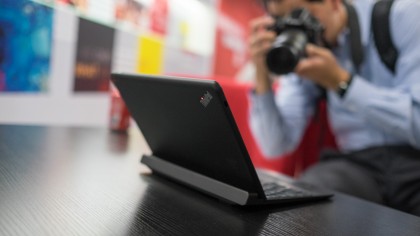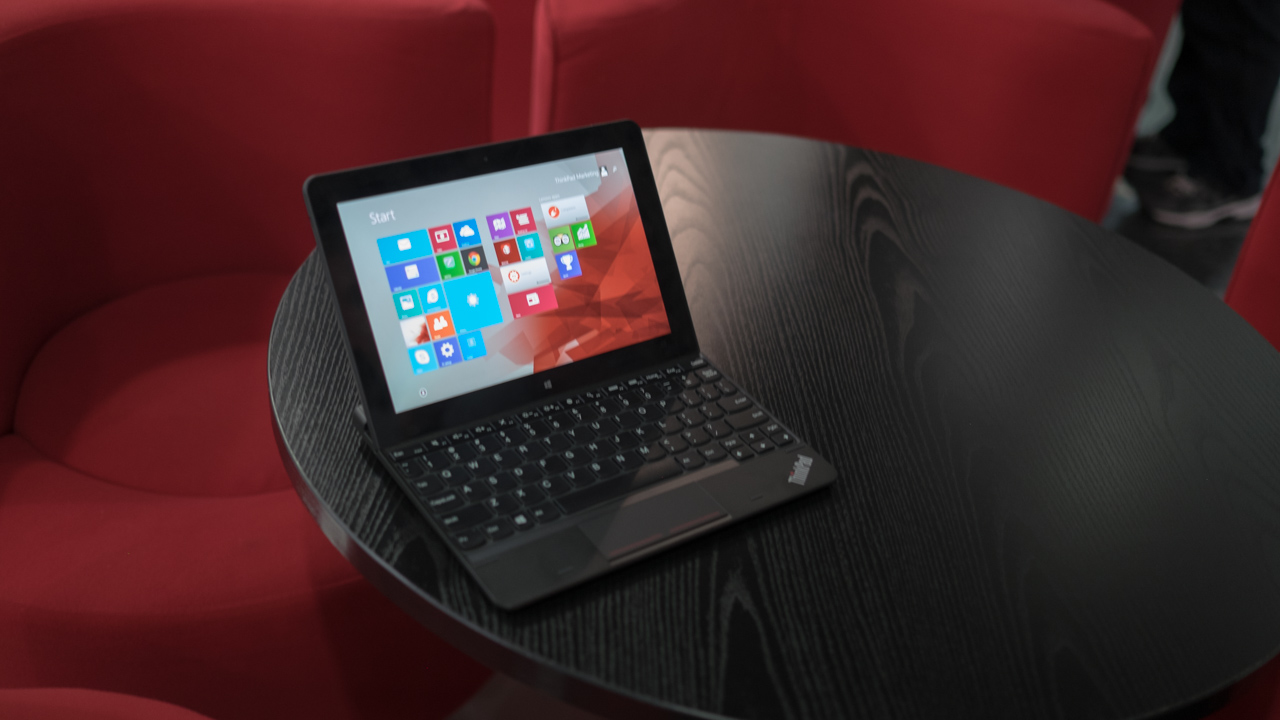Early Verdict
Want an affordable, yet solid Windows tablet for work? The bright and light Lenovo ThinkPad 10 might just be what the doctor ordered.
Pros
- +
Bright and vibrant HD display
- +
Thin and light
- +
Solid build quality
Cons
- -
Anemic storage and memory options
- -
Cramped keyboards
Why you can trust TechRadar
Despite being in the tablet space for a relatively short time, Lenovo carved a name for itself by producing the excellent ThinkPad 8 and ThinkPad 10. Now, a year later, the Chinese computer company is back at the Windows slate game with next generation ThinkPad 10.
Rather than being a whole new device, this 10-inch tablet comes as more of a refresh than a completely new product. The 2015 edition sports the same slim design as the last year’s Lenovo ThinkPad 10, but the internals have been updated with quad-core Intel Atom Z8500 or Z8700 processors, plus a few new software features.
Design
Seeing the same body style is hardly a complaint in this case, because the older Lenovo ThinkPad 10 already set a great precedent with its solid, metal chassis. As a business-oriented device, this tablet comes with a minimalistic, black paint job and anodized finish, which feels very reminiscent of the iPad Air 2.

That said, the Lenovo ThinkPad isn’t quite as thin, with a frame measuring in at 10.1 x 7.0 x 0.35 inches (256.5 x 177 x 9.1 mm) as opposed to the 6.6 x 9.4 x 0.24-inch (169 x 240 x 6.1 mm) iPad Air 2. Unsurprisingly, the iPad Air 2 is also significantly lighter, weighing in at 0.96 pounds (437 grams), while the ThinkPad 10 tips the scales at 1.36 pounds (617 grams).
While the Lenovo ThinkPad weighs over a quarter pound more than the lightest tablet in the world, this isn’t a device that will strain your arm anytime soon. It feels incredibly light to grasp in your hand while feeling completely solid.
Lenovo’s 10-inch slate is also a step ahead compared to the Dell Venue 11 Pro, which weighs in at 1.6 pounds (0.72kg) and measures 11.01 X 6.95 X 0.42 inches (279 X 176 X 1.07 mm) overall. Then again, Dell’s tablet comes packing a 10.8-inch display.

At the front, the tablet sports an edge-to-edge sheet of Corning Gorilla Glass 3 that helps to protect the ThinkPad 10’s 1,920 x 1,200 WUXGA display. The 10.1-inch screen also, unsurprisingly, happens to be touch sensitive and will detect up to 10 fingers at a time.
Extra extra
As an extra software flourish, Lenovo has also added a WRITEit software feature that allows users to easily scribble down notes whenever they please. Though I didn’t get a chance to test this feature with a pre-production unit at a Lenovo event event in Beijing, a Lenovo spokesperson explained that WRITEit will work with any textbox that normally brings up a text cursor prompt.
WRITEit is one of the few newly added bundled applications I’m actually looking forward to, since it’s another way to avoid the dreadfully small keyboard. Packing any keyboard into a tiny, confined peripheral for a 10-inch screen is a herculean task, but with the Lenovo ThinkPad 10’s Ultrabook keyboard, I found the typing experience especially terrible.

Don’t get me wrong, the keys feel just as good as any AccuType keyboard seen on Lenovo’s other laptops. But the tight spacing of the whole thing makes it a pain to type on.
On top of a hard keyboard attachment, users will also be able to pick out yet another typing solution with the Foilo keyboard. Additionally, the Quickshot cover is designed with a folding section that allows tablet photographers to get to shooting faster.
Quicker parts
Under the hood, Lenovo has made a few more changes by swapping out the old Bay Trail Intel Atom processor with more modern Cherry Trail Intel Atom Z8500 and Z8700 chipsets. The new systems-on-a-chip should give the ThinkPad 10 an extra kick in in the pants.
And like the rest of Intel’s new Broadwell lineup, Lenovo claims this new processor will allow the ThinkPad 10 to last a maximum of 10 hours on a single charge. That’s a step up from the 8 hours we saw the slate’s predecessor pulled off.
Chipset aside, the ThinkPad 10 still comes with an anemic 2GB of memory and 64GB of onboard storage. This alone almost requires you to immediately upgrade to the higher-spec model, with 128GB of solid-state storage and a 4GB of memory.

The Lenovo ThinkPad 10 will be available in August 2015 to coincide with the Windows 10 launch. Alongside all the new improvements, Lenovo promises full integration between REACHit, the company’s in-house cloud database directory and search client and Microsoft’s Cortana to make searching for files more natural than ever.
The 10.1-inch tablet will come at a starting price of $549 (about £358, AU$712). The Folio keyboard, meanwhile, begins at $110 (about £78, AU$142), an Ultrabook cover goes for $119 (about £154, AU$154) and lastly, the QuickShot cover asks for $45 (about £29, AU$58).
Early verdict
The Lenovo ThinkPad 10 was an excellent device, and so it should come as no surprise the new model is just as good if not better. However, without fully testing the tablet, it’s too early to say whether the new Cherry Trail processor truly offers up more potential for this machine.
Additionally, the Windows tablet space has changed quite a bit, with sales for slates declining. What’s more, Dell has come up with a doozy of a device with the Venue 11 Pro 7000 that offers nearly as much portability with a thinner, fanless design.
We’ll reserve final judgment until a full review, but what I’ll say is that the latest ThinkPad 10 is looking mighty fine amid some serious competition.
Kevin Lee was a former computing reporter at TechRadar. Kevin is now the SEO Updates Editor at IGN based in New York. He handles all of the best of tech buying guides while also dipping his hand in the entertainment and games evergreen content. Kevin has over eight years of experience in the tech and games publications with previous bylines at Polygon, PC World, and more. Outside of work, Kevin is major movie buff of cult and bad films. He also regularly plays flight & space sim and racing games. IRL he's a fan of archery, axe throwing, and board games.
What is a hands on review?
Hands on reviews' are a journalist's first impressions of a piece of kit based on spending some time with it. It may be just a few moments, or a few hours. The important thing is we have been able to play with it ourselves and can give you some sense of what it's like to use, even if it's only an embryonic view. For more information, see TechRadar's Reviews Guarantee.

